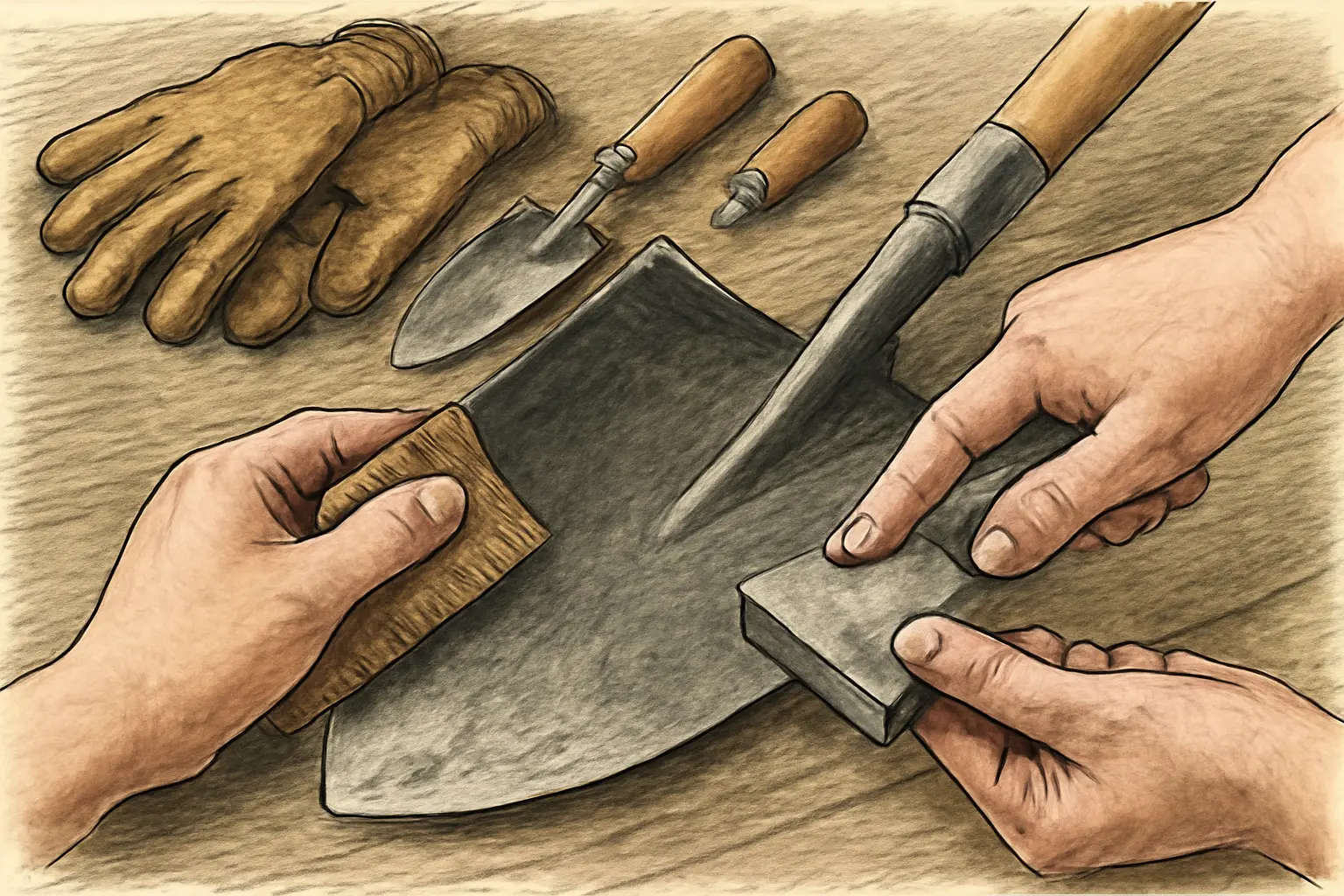In 2025, maintaining your carbon steel spade is crucial to ensure its longevity and reliable performance in gardening tasks. Carbon steel spades offer unmatched strength but require regular upkeep to prevent rust and wear, common issues that reduce their effectiveness. This guide focuses on practical tips for cleaning, protecting, sharpening, and proper storage—all tailored to help you keep your spade in optimal condition. By following these expert maintenance steps, you can extend the lifespan of your tool and enjoy smoother, more efficient gardening seasons ahead.
1. Why Carbon Steel Spade Maintenance Matters
Carbon steel spades are invaluable tools in gardening and landscaping, yet their composition makes them vulnerable to rust and corrosion. The high carbon content that provides strength and durability also increases the risk of oxidation when exposed to moisture and air. Without proper upkeep, rust can rapidly degrade the metal, weakening the spade and diminishing its effectiveness.
Effective carbon steel spade maintenance not only prevents deterioration but also preserves sharpness and usability, which are essential for precise digging and soil management. Regular cleaning, drying, and protective oiling form the cornerstone of maintaining these tools. For example, a gardener who routinely removes soil residue and applies a light coat of oil after use can significantly extend the life of their spade.
This is especially critical for professionals such as landscapers who rely on durable equipment to sustain daily workloads. Even homeowners and DIY enthusiasts benefit from consistent care, ensuring their tools remain reliable across projects. Emphasizing maintenance helps avoid costly replacements and promotes sustainable gardening practices.
Key maintenance actions to consider:
– Cleaning off dirt and moisture immediately after use
– Applying rust inhibitors or light oils
– Storing in dry, ventilated environments
Understanding these factors highlights why carbon steel spade maintenance matters in 2025 for anyone valuing tool longevity and performance.
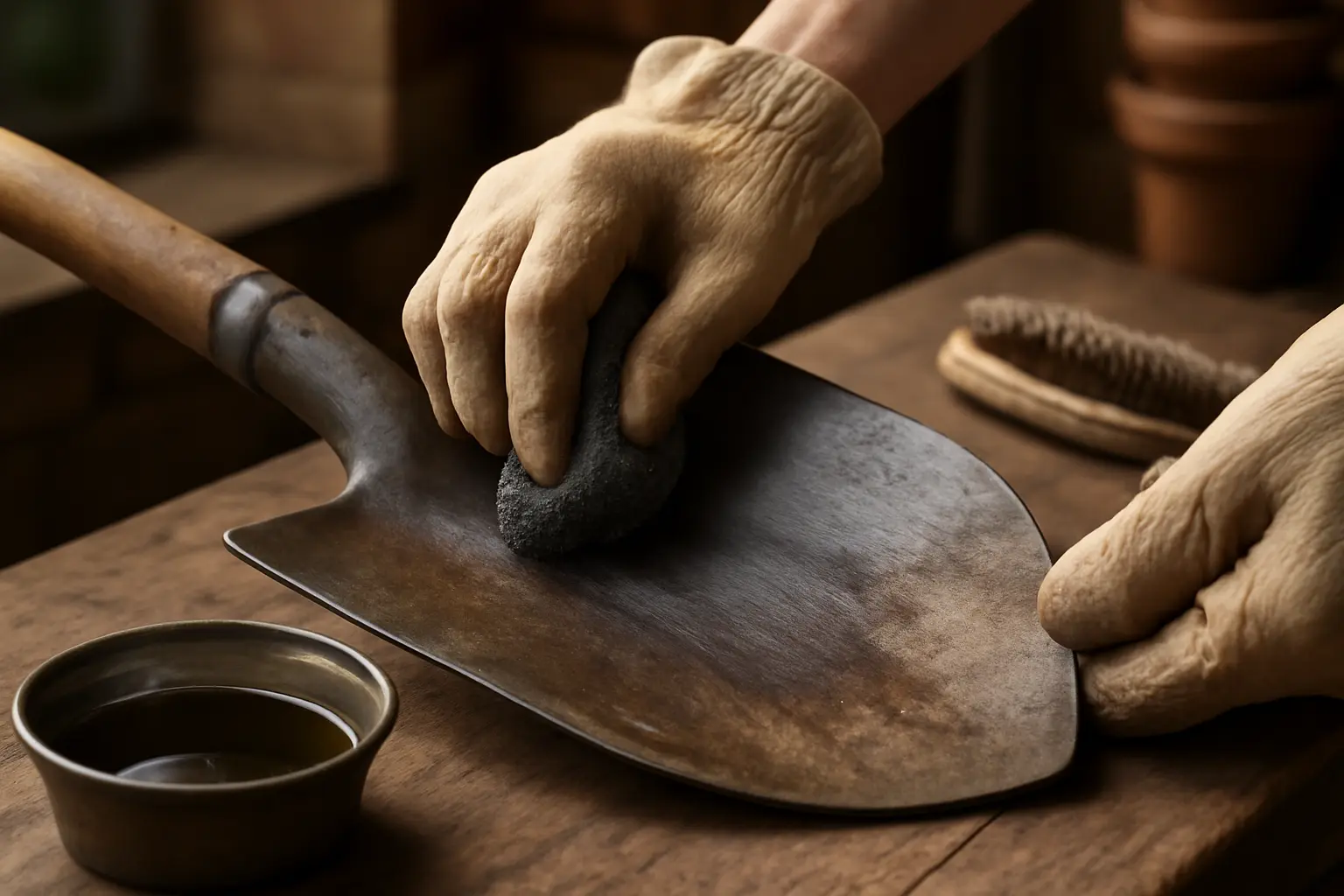
2. Effective Cleaning Routine
Maintaining a carbon steel spade demands a precise cleaning routine to prolong its life and optimize performance. Right after use, remove stubborn soil, sap, and plant debris promptly to avoid residue buildup that can cause corrosion. Start by rinsing the spade with water and then scrub gently using a soft brush combined with a mild detergent; avoid harsh chemicals that could strip protective oils. Thorough drying is crucial—moisture left on the steel surface invites rust, so use a clean cloth or let the spade air dry completely in a ventilated spot before storage. For extra protection, apply a light coat of mineral oil to the blade, which helps repel moisture and maintain a smooth surface. Following these steps regularly ensures your carbon steel spade remains sharp, rust-free, and ready for every gardening task in 2025 and beyond.
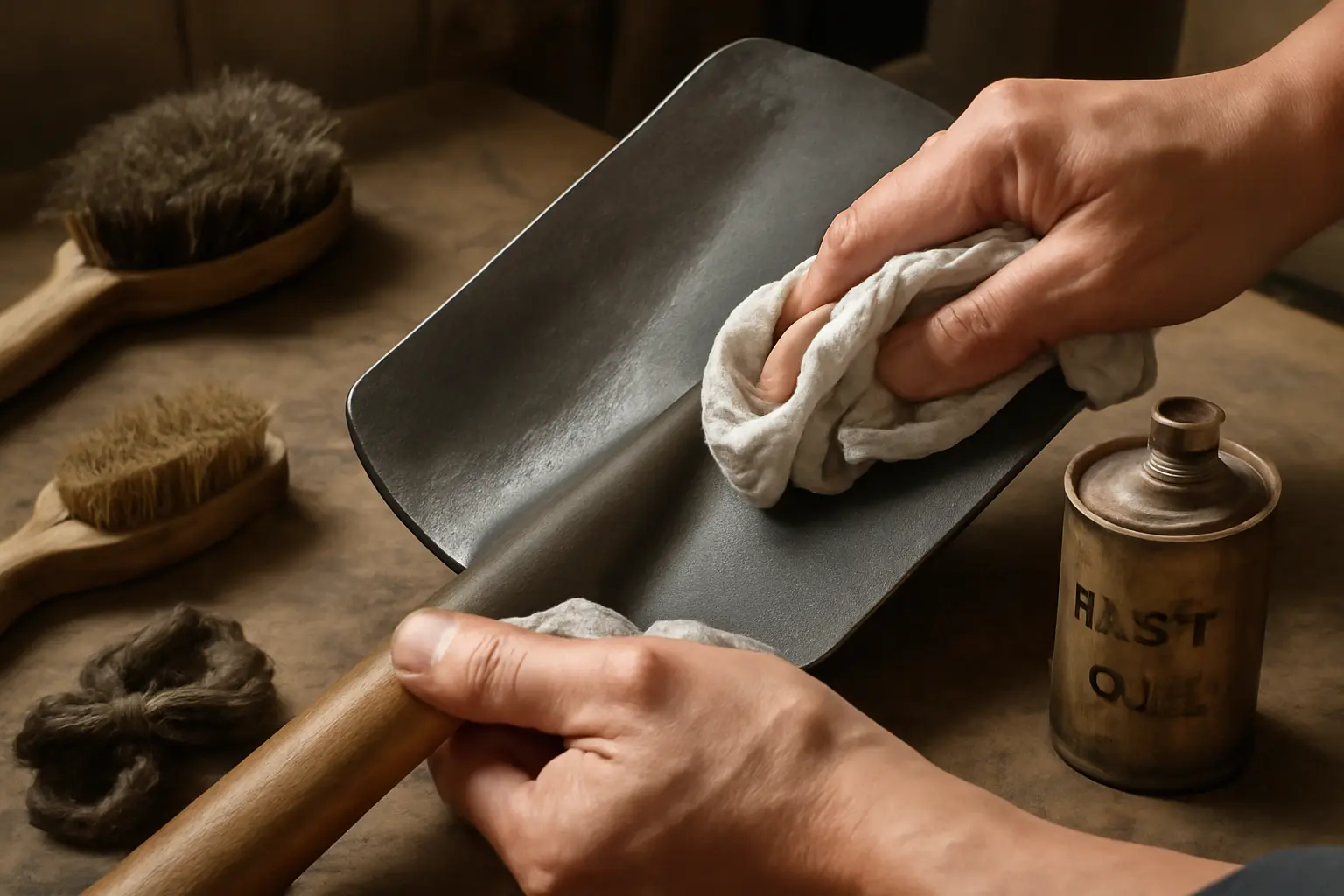
3. Preventing Rust: Protection Techniques
Carbon steel spades are prone to rust because their iron content reacts quickly with moisture and oxygen, especially under outdoor gardening conditions. Unlike stainless steel or coated tools, carbon steel lacks inherent corrosion resistance, making proper maintenance essential to extend tool life. One effective prevention method is applying oils such as camellia oil, which creates a thin, water-repellent layer that blocks moisture and prevents oxidation. Regular oiling after cleaning the spade is critical to maintain this protective barrier.
For early signs of rust, commercially available rust removers offer a safe way to restore the metal surface. Products containing phosphoric acid or gentle abrasives can be used; always follow the instructions and consider wearing gloves. After rust removal, reapply oil promptly to prevent recurrence.
Storage also plays a vital role in rust prevention. Using rust-resistant materials like coated paper or specialized rust-proof wraps can keep the spade dry and safe from air exposure during off-season periods. Storing tools in a dry, ventilated area further reduces moisture buildup.
Maintaining a carbon steel spade with these protection techniques not only preserves its strength and cutting efficiency but also provides reliable performance for many gardening seasons.
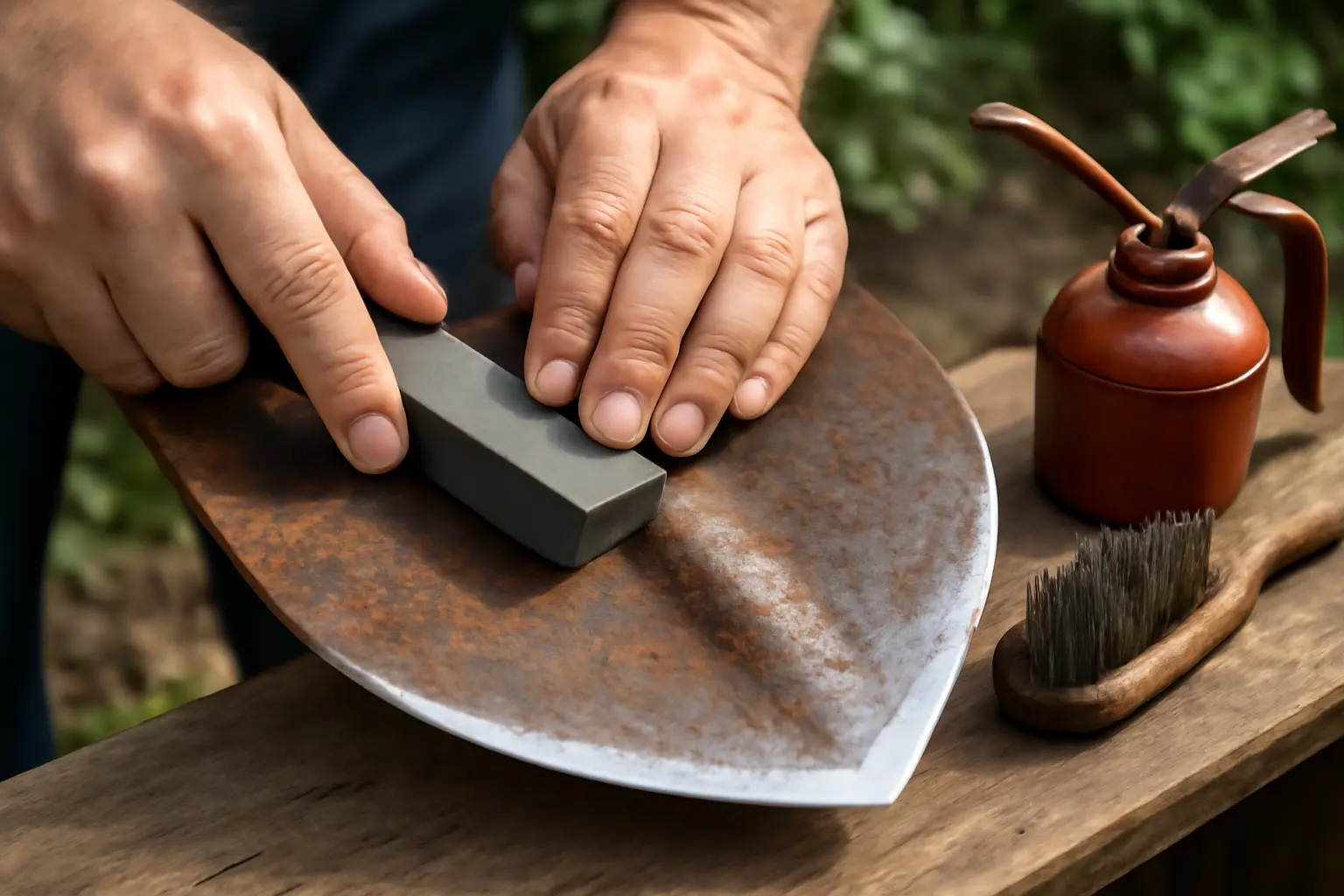
4. Sharpening Your Carbon Steel Spade
Maintaining the sharpness of your carbon steel spade is essential for efficient digging and prolonging the tool’s lifespan. In 2025, proper carbon steel spade maintenance involves regular sharpening to keep the blade’s cutting edge effective. Start by selecting appropriate sharpening tools such as a flat file or a fine whetstone; these tools help restore the spade’s edge without damaging the blade. Take safety precautions seriously—always wear protective gloves and secure the spade firmly to avoid slipping.
The sharpening process should begin by removing dirt and rust, then filing the blade at a consistent angle, typically between 20 to 25 degrees. Use smooth strokes, following the original bevel, to avoid uneven wear. After filing, gently hone the edge with a whetstone to achieve a fine, sharp finish.
Frequency of sharpening depends on usage patterns: for regular gardening or digging every week, sharpen every 2 to 3 months. For occasional use, sharpening twice a year is sufficient. Paying attention to signs of dullness, such as struggling to penetrate soil or uneven cuts, signals when to sharpen. This regular care not only enhances your work efficiency but also protects the integrity of your carbon steel spade.
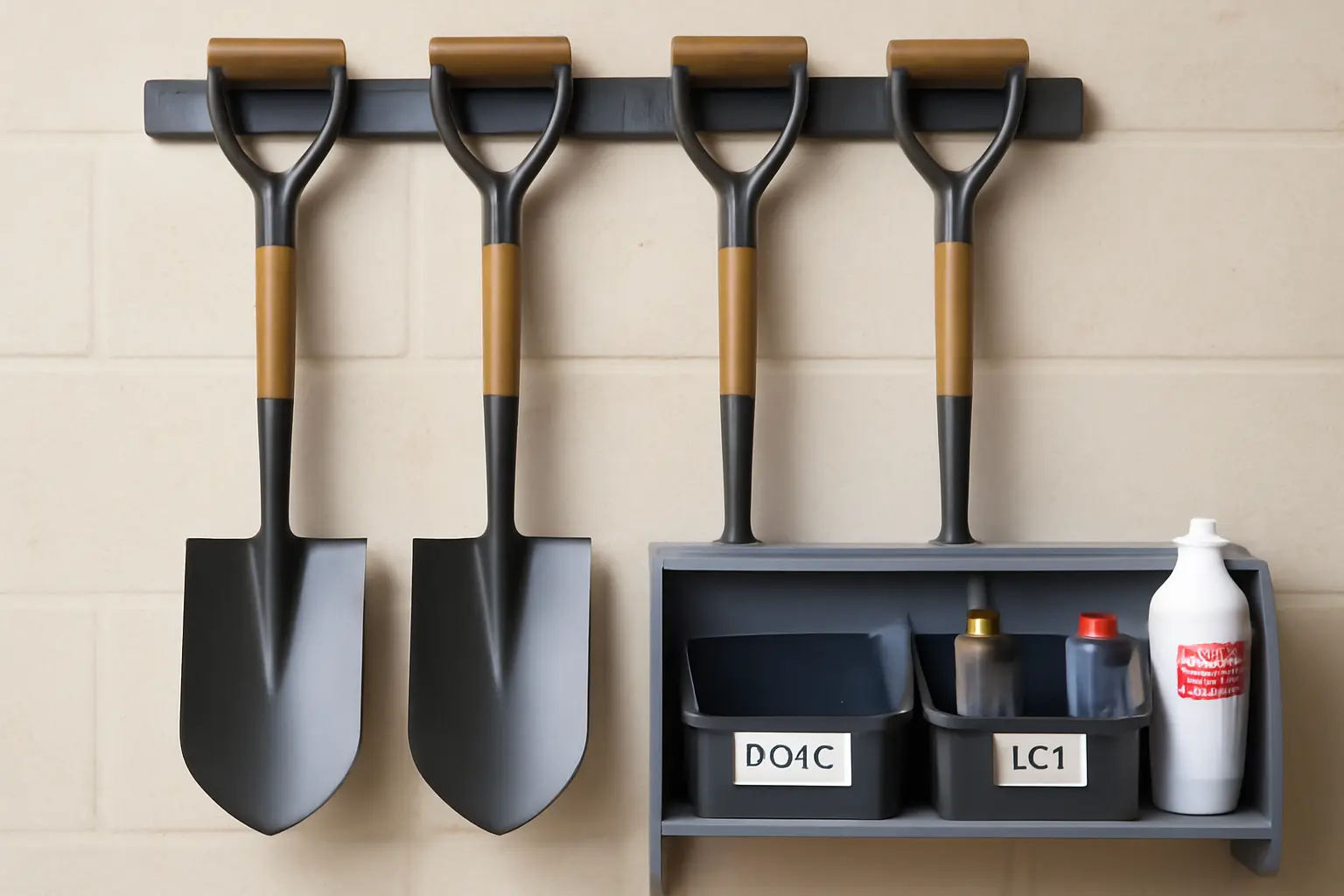
5. Optimal Storage Solutions
Proper maintenance of carbon steel spades extends beyond cleaning and sharpening; effective storage solutions are equally vital in preserving tool longevity in 2025. To prevent rust and decay, store spades in dry, well-ventilated spaces where moisture exposure is minimized. For instance, hanging the spade on a wall-mounted rack allows air circulation around the blade, reducing the risk of corrosion compared to storing it on damp floors or crowded toolboxes.
Using protective sheaths or covers specifically designed for carbon steel spades adds a crucial layer of defense, preventing direct contact with wet surfaces or chemicals that might accelerate blade wear. During off-season periods or extended storage, removing residual soil and applying a thin coat of light oil before storing can safeguard the metal from oxidation.
In addition, organizing tools thoughtfully avoids unnecessary damage; spades should never be stacked haphazardly, as blade edges can be nicked or bent. By adopting these optimal storage practices, gardeners and professionals ensure their carbon steel spades remain sharp, reliable, and ready for use year-round, reflecting a commitment to equipment care aligned with best maintenance standards in 2025.
6. Troubleshooting Common Issues
Maintaining a carbon steel spade in 2025 demands vigilant attention to common issues such as rust, stains, and wear. Effective carbon steel spade maintenance begins with recognizing that stubborn rust or discoloration should be treated with gentle yet effective methods. For example, soaking the spade head in a diluted vinegar solution followed by scrubbing with fine steel wool can safely lift rust without damaging the metal’s integrity. Avoid using harsh abrasives or acidic cleaners that accelerate corrosion.
Common maintenance mistakes include neglecting to dry the spade thoroughly after cleaning and failing to apply a protective oil layer. These oversights accelerate oxidation and reduce tool longevity. In the field, a quick preventive step is wiping the spade dry immediately after use and lightly coating it with WD-40 or a similar rust inhibitor. If unexpected rust appears during outdoor work, rubbing with a cloth dipped in mineral oil can provide temporary protection until proper cleaning is possible.
Practical tips for emergency maintenance also involve checking the handle for cracks or looseness that could compromise safety. Tightening any loose fittings promptly and removing sap or dirt that might trap moisture are fundamental. Reliable carbon steel spade maintenance ensures readiness, extends tool lifespan, and avoids costly replacements, supporting efficient gardening or landscaping tasks.
7. Incorporating Convenient Maintenance Habits
Maintaining a carbon steel spade requires establishing easy, consistent habits to ensure longevity and reliable performance. After every use, thoroughly clean the blade to remove soil and moisture, then apply a light coat of oil to prevent rust and corrosion. This quick maintenance step forms a sustainable routine that protects your tool from environmental damage. Regular inspections are essential; check for signs of rust, cracks, or dullness that could impair effectiveness. Addressing minor issues early, such as sharpening or rust-removal, extends the tool’s lifespan significantly. For long-term care, perform a deep cleaning and re-application of protective oil at least once a year. This involves scrubbing away residual grime and old oil buildup, followed by a fresh oil layer to maintain a smooth, rust-resistant surface. Adopting these convenient maintenance habits ensures that your carbon steel spade remains in optimal condition for every gardening task, saving time and money on replacements or repairs in 2025 and beyond.
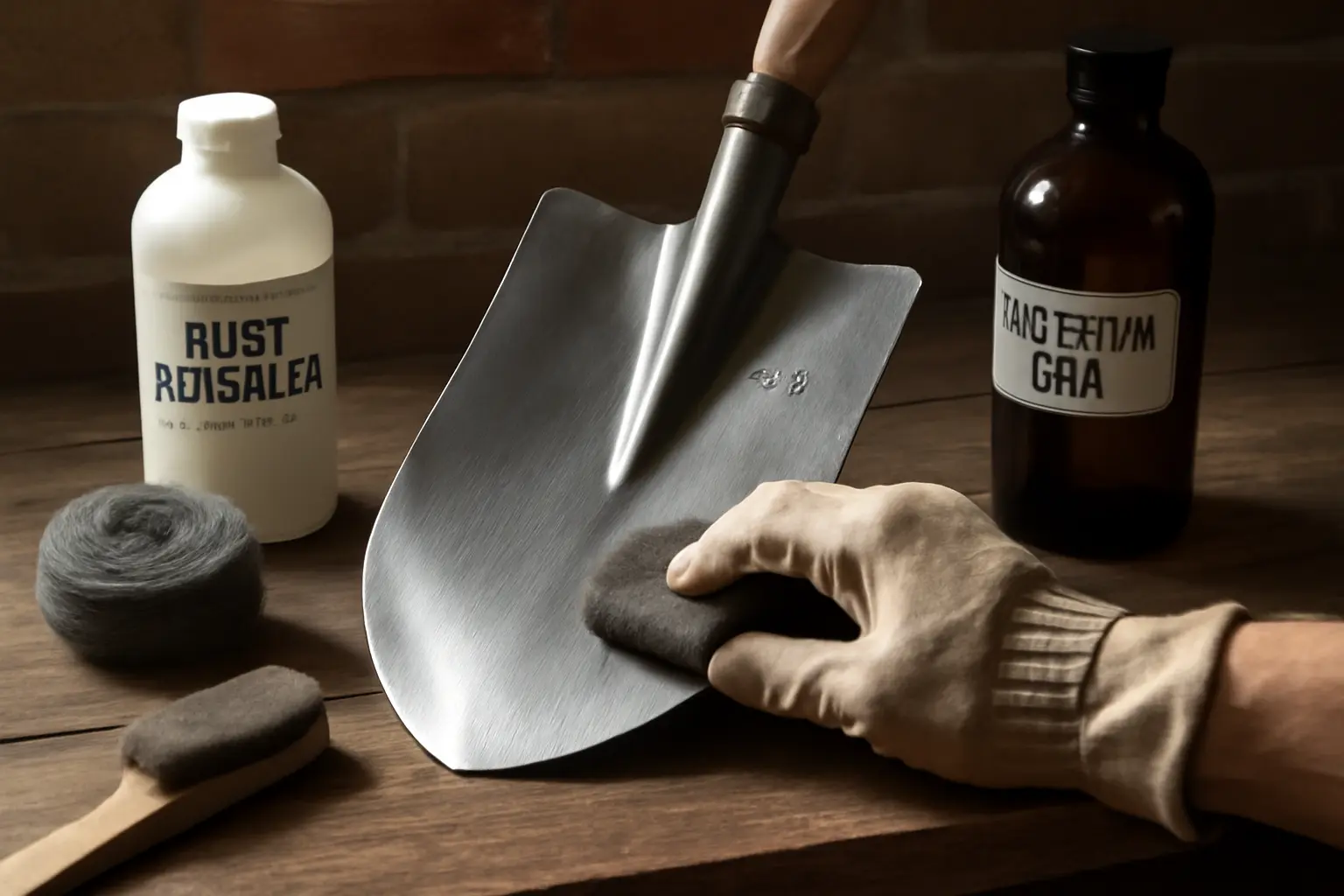
8. Recommended Products for Carbon Steel Spade Maintenance
Maintaining a carbon steel spade in top condition requires selecting the right products that protect against rust and wear effectively. For 2025, camellia oil remains the preferred lubricant and rust preventative thanks to its natural properties, non-toxicity, and ability to penetrate metal pores deeply without gumminess. Beyond camellia oil, trusted rust removers formulated specifically for carbon steel are essential to reverse oxidation without damaging the metal’s integrity. Popular options include phosphoric acid-based removers and specialized sanding products designed for spade blades. Cleaning supplies should be gentle yet efficient; mild soaps or biodegradable cleaners along with soft brushes help maintain finish without abrasive harm. When sourcing these products, reputable garden and hardware stores or specialist online retailers focused on tool maintenance offer the best quality and authenticity, ensuring they suit the delicate balance of carbon steel spade maintenance. Regular application of these maintenance essentials extends the lifespan of your spade and preserves sharpness and functionality, meeting the needs of gardeners and professionals alike.
9. Summary of Best Practices for Long-Lasting Carbon Steel Spades
Maintaining a carbon steel spade properly guarantees durable performance and lengthened blade life, crucial for any gardener or landscaper. Regular carbon steel spade maintenance includes thorough cleaning after use to remove soil and moisture that accelerate rust formation. Applying a light oil coat on the blade protects against corrosion during storage. Sharpening the blade periodically ensures efficient cutting and digging, reducing effort and blade damage.
It is equally important to store the spade in a dry place, avoiding prolonged exposure to moisture that compromises the steel’s integrity. Inspecting the handle and fixing any loose parts prevents accidents and enhances tool longevity. Following these practical steps not only extends the life of the spade but also improves safety and effectiveness in gardening tasks.
Checklist for Long-Lasting Carbon Steel Spades:
– Clean blade immediately after use to remove dirt and moisture
– Dry blade thoroughly before storage
– Apply a thin layer of protective oil on the blade periodically
– Sharpen blade edges regularly to maintain cutting efficiency
– Store spade in a dry, ventilated environment to prevent rust
– Inspect handle and tighten or replace loose components
– Avoid striking hard or rocky surfaces that could chip the blade
Adhering to this checklist ensures your carbon steel spade remains a reliable and efficient tool for many seasons ahead, reflecting the best practices of carbon steel spade maintenance in 2025.






